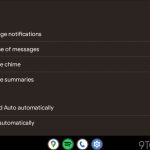The fact that Beijing has taken the side of Moscow after the invasion of Ukraine has caused an alignment on China within NATO. However, despite the show of unity in Madrid, the new view of Beijing should not be exaggerated either among the allies or among its partners in the Indo-Pacific.
The Indo-Pacific is very far from Madrid, but in the last NATO summit, held in the city, had a very prominent role. The leaders of the four Indo-Pacific NATO partners – the indo pacific partnership (AP4): South Korea, Japan, Australia and New Zealand – were invited for the first time to attend this decisive summit, in which the allies approved a new Strategic Concept. This roadmap for NATO’s next decade maintains a strong focus on Russia as the most direct threat to the alliance, but also addresses the “systemic challenges” it poses. Chinawhich is a novelty.
Despite the attention paid to Russia in the context of the current war in Ukraine, the Indo-Pacific has firmly entered the horizon of the NATO. China’s association with Russia, along with Beijing’s decision not to distance itself from Moscow after the invasion, have played a key role in highlighting the links between the European and Indo-Pacific scenarios. This may lead to a greater presence of the various NATO allies in the Indo-Pacificin cooperation with regional partners, an outcome China had tried to avoid.
The China-Russia factor
All the allies of the NATO share a growing concern about the geopolitical rise and power projection capacity of Chinaas well as the repercussions they may have on the rules-based international order and the global balance of power.
At present, China is not only assuming a central role in world security affairs Indo-Pacific, but is also becoming an increasingly visible security actor in Europe and its periphery. Y Beijing’s “strategic partnership” with Russia, reaffirmed after the Russian invasion of Ukraine, plays a key role in shaping the threat perception of many allies. The joint Sino-Russian military exercises in recent years, both in Europe like in Eastern Asiahave become a point of special concern for the nations of both scenarios.
“Beijing’s ‘Strategic Partnership’ With Russia, Reaffirmed Following Russia’s Invasion Of Ukraine, Plays A Key Role In Shaping Many Allies’ Perceived Threats”
NATO’s role in dealing with any security challenge posed by China in the Euro-Atlantic area is self-evident. But the role of The alliance in the Indo-Pacific, if any, has long been controversial.
Some NATO members, such as the United States, the United Kingdom and France, maintain a regular military presence in the Indo-Pacific, while others either do not see the need to deploy to Asia now that Russia has emerged as a clear and direct threat to Europe and/or they do not have the necessary capabilities. But what seems clear is that the alliance will not operate collectively in the Indo-Pacific any time soon. “There is no way that NATO will move to the South China Sea“, according to him NATO Secretary General, Jens Stoltenberg.
How then does the alliance plan to “defend our shared values and rules-based international order, including freedom of navigation” against China’s “declared ambitions and coercive policies,” especially in the Indo-Pacific?
Cooperation with global partners
The answer lies more in a global approach than in a global presence. And cooperation with NATO’s global partners in the Indo-Pacific is a central piece of the puzzle.
The presence of AP4 partnership in Madrid constitutes a step towards this goal. It is also a clear signal that NATO allies and their Indo-Pacific partners share concern about the behavior of Russia and China on the international stage.
“Japanese Prime Minister Fumio Kishida expressed it clearly in Madrid: “I have a strong feeling that East Asia may be the Ukraine of tomorrow.”
Although the security challenges facing NATO allies today are quite different from those faced by NATO partners, Indo-Pacific, it seems that both sides are aware that closer cooperation is the only way to effectively protect the rules-based international order. Asian partners have condemned the Russian invasion of Ukraine and imposed sanctions on Moscow as a reply. In exchange, they try to secure the support of NATO (and Europe) for any possible conflict in Asia. Japanese Prime Minister, fumio kishida, expressed it clearly in Madrid: “I have a strong feeling that East Asia may be the Ukraine of tomorrow”.
Despite fears that the policy of western sanctions is bringing China and Russia closer together, the truth is that the Sino-Russian alignment is also unifying NATO and bringing the Euro-Atlantic countries closer to their allies and partners in the Indo-Pacific. Inadvertently, Beijing and Moscow have succeeded in establishing the links between Euro-Atlantic and Indo-Pacific security against which they had fought for a long time.
Beware of differences
However, despite this show of unity in Madrid, the new line-up on China nor among the allies of the NATO nor with partners in other parts of the world. There may now be a common perception of the threat, but when it comes to responses, there is a great diversity of opinion and approach.
Within Europe, the view that systemic rivalry should be the dominant framework through which relations with China are viewed is not fully shared. And the American view of China What “long-term threat” has many opponents within NATO, especially in Central and Eastern Europe, for whom Russia it is instead the main challenge. Others, such as Germany and France, have opposed attempts to lump Russia and China (somewhat against what I know He showed foreign policy adviser to Chancellor Olaf Scholz publicly, Jens Plotner), and to consider them as equal threats.
There are also differences among NATO’s Indo-Pacific partners, who have very different foreign policies and views on China, as well as their own interests in achieving greater coordination with NATO. Australia and Japan, both members of the ATV (the others are the United States and India), are the most aligned with Washington when it comes to relations with China, although both have stressed the need to maintain stable ties with Beijing.
“Germany And France Have Opposed Attempts To Put Russia And China In The Same Bag And Consider Them Equal Threats”
However, attempts by the Chinese leadership to bring about a thaw in relations with Australia after the election of the prime minister Anthony Albanese they seem to be getting nowhere as Canberra has shown signs of continuing the previous government’s tough stance on China. The delivery by the Minister of Foreign Affairs, Wang Yiof a list of demands to rebuild the relationship – which included “considering China as a partner and not as a rival” and “not targeting any third party or being controlled by any third party” (a clear reference to the US) – sparked a immediate response by Albanese, who stated bluntly: “Australia does not respond to demands”.
And in Japanthe first Minister Kishida Fumio has adopted a tougher stance against China’s activities in the region and continues to back Tokyo’s alliance with Washington (which it has described as “cornerstone” of Japan’s security policy) to increase deterrence against China.
But while in Beijing these two members of the ATV they are on the US side, New Zealand and South Korea are another story. The Prime Minister’s Government Jacinda Arden has indicated that New Zealand has no intention of joining any coalition addressed to China. And the country’s close economic ties with China, coupled with the long-standing principle of maintaining an independent foreign policy, are likely to limit any possible change in policy toward China.
South KoreaFor its part, it considers China a lower priority than North Korea, its nuclear program or the protection of its economic security. The newly elected president Yoon Suk-yeol has articulated a vision of his country as “global pivot state” that it will pursue a values-based foreign policy, and has announced that South Korea will launch its own Indo-Pacific strategy later this year. But as Seoul theorizes, South Korea’s “pragmatic” approach to relations with Beijing, which seeks to avoid alienating China to avoid economic retaliation, runs deep. Furthermore, the role of tensions between South Korea and Japan cannot be underestimated: close cooperation on China between Seoul and Tokyo still seems unattainable.
The way to follow
The total alignment of the approaches regarding China (or Russia) both within the NATO as with the Indo-Pacific partners of the alliance is highly unrealistic. Not all countries see China as an equally pressing challenge. And even among those who do, the political formulas vary, from a close alignment with the US as a deterrent against Chinese aggression, to attempts to maintain good relations with Beijing in the hope of influencing its actions and encouraging China to behave more responsibly.
However, increased engagement with partners in the Indo-Pacificalong with NATO’s inclusion of the European Union as a “sole and essential partner” in its Strategic Conceptwill create new opportunities and formats for cooperation and coordination between regions and institutions.
“Beijing has tried to dissuade European countries and other NATO members from becoming more involved in the region, warning them not to do anything that could “harm regional peace and stability” and warning of the consequences.”
But it is important to distinguish between the possible collective implication of the NATO in the Indo-Pacific and that of its member states. Although the former remains highly unlikely (despite Beijing’s claims), individual allies can take advantage of the alliance’s growing engagement with its global partners to increase their own presence in the region.
Beijing has tried to dissuade European countries and other NATO members to become more involved in the region, warning them not to do anything that could “harm regional peace and stability” and warning of the consequences. We should expect a tough response from Beijing as it adjusts to the new dynamic of cooperation between NATO members and its regional partners.












Add Comment